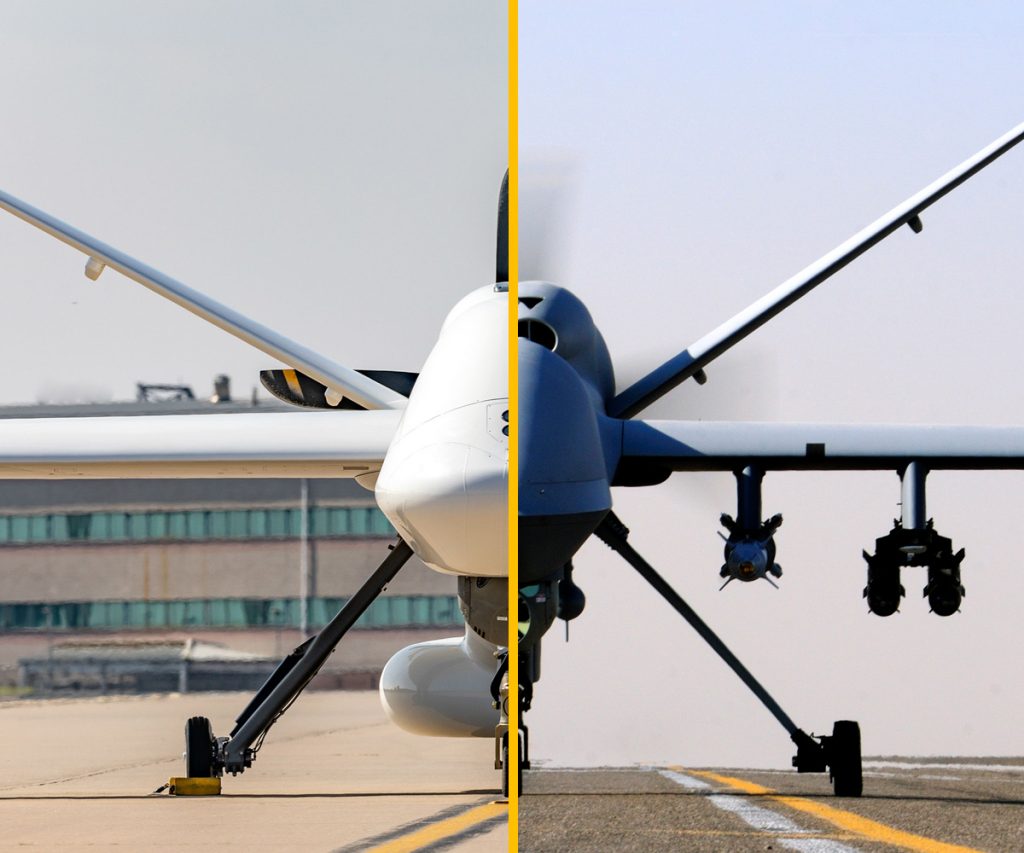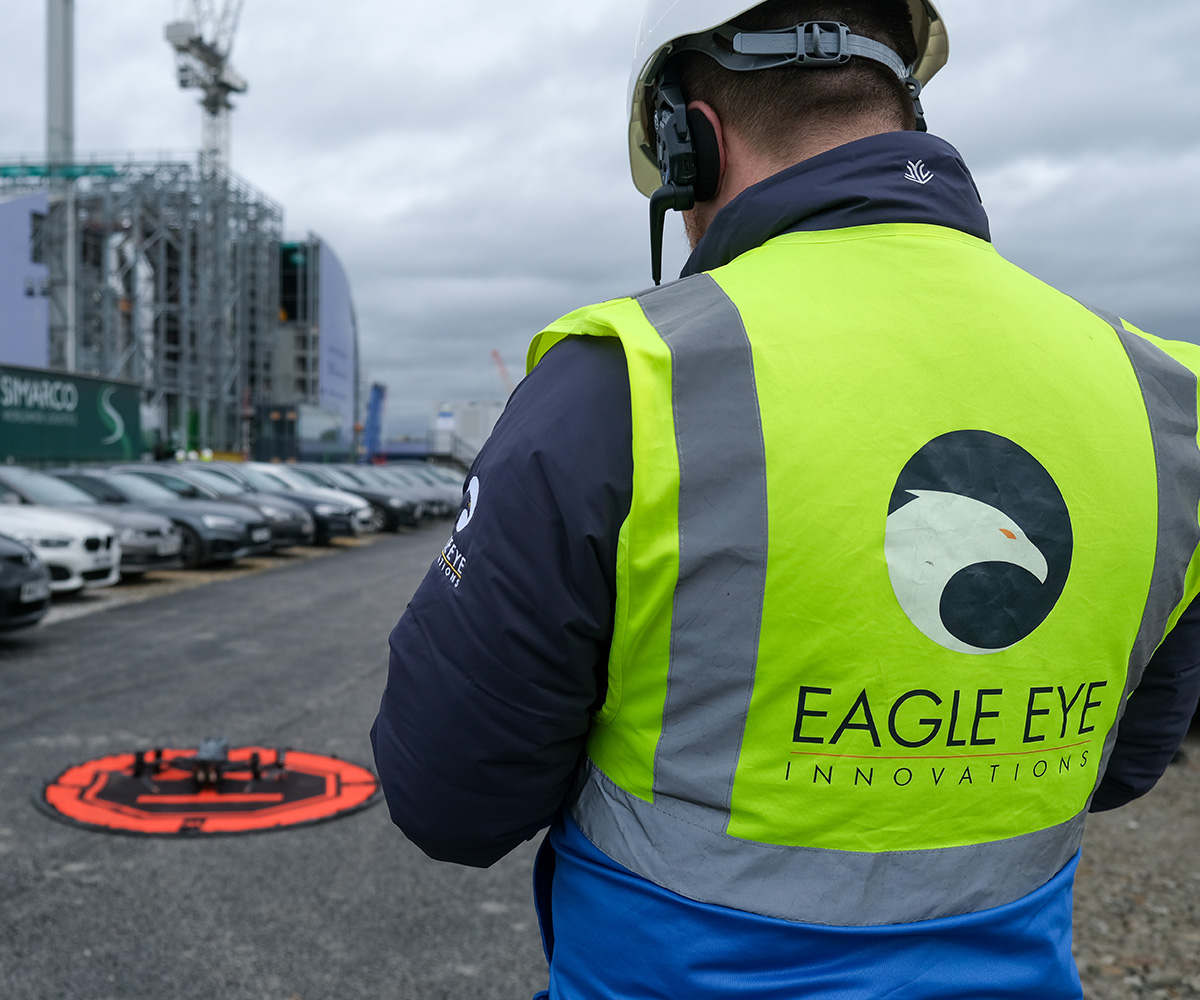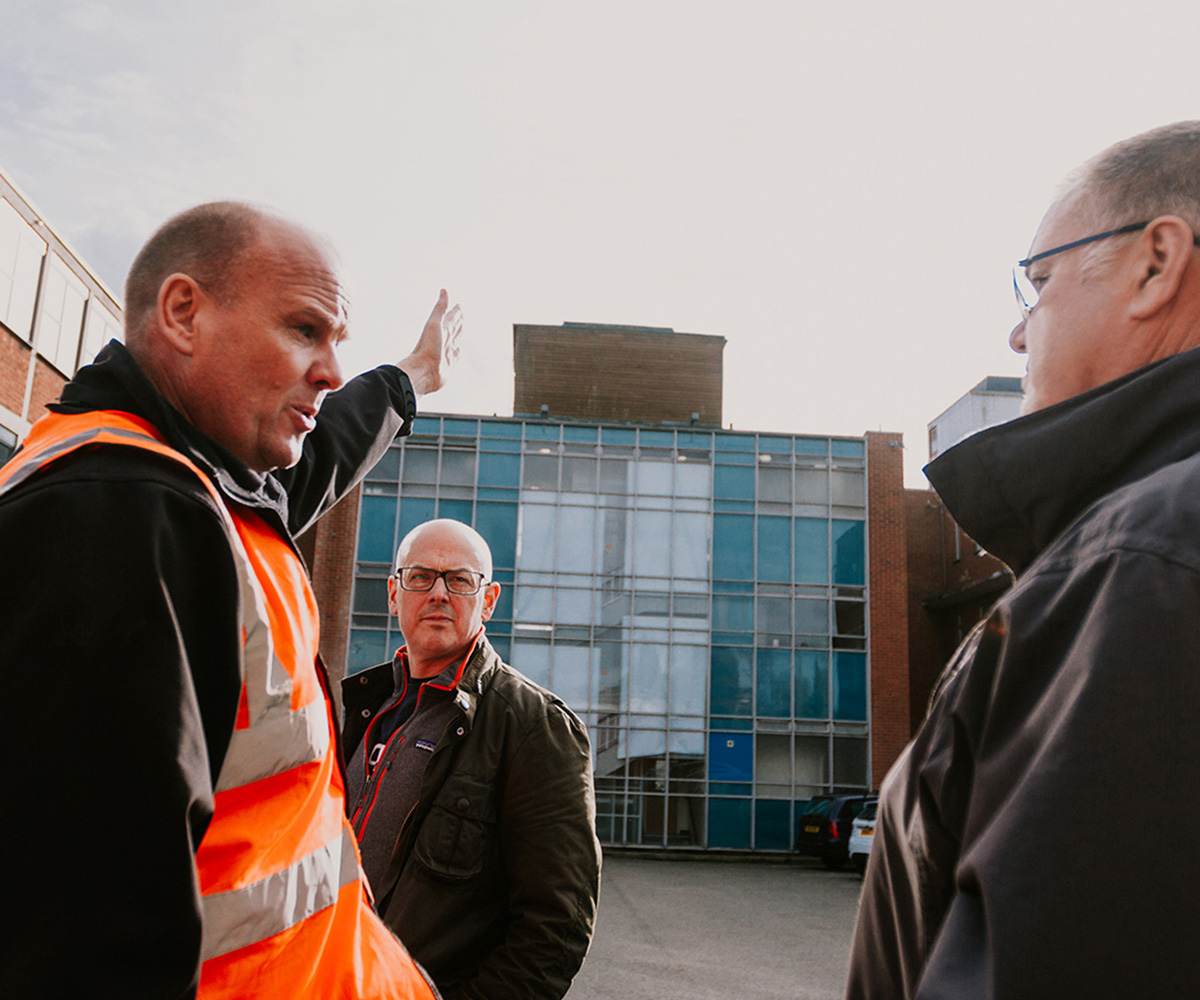
Learn about Eagle Eye Innovations and the people at the heart of the organisation.


The tragic events of September 11th, 2001 saw the United States and its allies embark on a huge campaign in Afghanistan to destroy the Taliban. This was a very different environment to the previous campaigns of the 90’s in Iraq and Kosovo, with a very ‘low-tech’ surface to air threat and air supremacy all but guaranteed, particularly above 10,000 ft ground level, which is typically assessed as the effective top height for Anti-Aircraft Artillery and Heavy Machine Guns. This type of campaign became known as a COIN or COunter INsurgency and necessitated a step change in tactics and capability. It needed something with persistence and an accurate, low-collateral strike option, but more importantly the ability to gather and rapidly disseminate intelligence on the ever-changing ground picture directly to the ground commander.
Enter the General Atomics-Aeronautical Systems Incorporated (GA-ASI) MQ-1 Predator, which revolutionised the way that Uncrewed Air Vehicles (UAVs) were employed. No longer were they expensive toys with limited capability. Now they were demonstrating that they could be a true ‘Combat ISR’ platform. Based on the Predator’s success, the US Government fast-tracked its replacement, which led to the development and fielding of the MQ-9A Reaper (or Predator B) in 2007; a larger, more capable, more heavily armed platform, with greater endurance and connectivity than the Predator, and which provided an almost constant air presence for friendly forces throughout the campaign. As impressive a capability as it was though, it had limitations. The MQ-9A could not operate in cloud or icing conditions and required a forward deployed flight crew to operate within Visual Line Of Sight (VLOS) to take-off and recover the aircraft. This was to mitigate the time delay when operating via the satellite communication (SATCOM) links, which would have made operating close to the ground challenging.
UK Reaper was purchased as a UOR (Urgent Operational Requirement); an accelerated procurement process which meant that the RAF procured the platform effectively ‘off-the-shelf’. This also meant that temporary operational facilities were needed, with all training conducted in the US. Critically, the aircraft was not certified, meaning it could only be flown in operational, deconflicted airspace. These factors forced unique challenges on the RAF, certainly for the UK based XIII squadron, which had formed in 2012. With no ability to train on a dedicated training aircraft or simulator, everything had to be conducted on live operations, which meant training objectives were frequently compromised to service the task they were supporting with the instructor often having to ‘jump’ back into the seat. Emergency procedures could only be discussed rather than practised, and training weapon events had to be carefully controlled due to always carrying live weapons. However, the Reaper Force adapted and maximised the training opportunities that flying in a high-tempo operational environment presented, helping crews to rapidly achieve Combat Ready status. Crews were also unable to participate in complex, live training exercises with other Force elements, meaning aircrew and ground forces were unable to practise and refine training, tactics and procedures (TTPs) prior to delivering on operations.
The first tranche of aircrew posted to UK Reaper had transferred across from other aircraft types and came with significant experience, but this was not a sustainable model. Therefore, the RAF generated a direct entry stream into Service for an RPAS pilot, which saw new pilots fast-tracked onto a Reaper Operational Conversion Unit (OCU) once they had completed elementary flying training (EFT). This resulted in a high ‘dilution rate’ of new pilots with no experience of operations or basic aviation skills such as dealing with poor weather, adding significant pressure to the more experienced aircrew and instructors. However, these challenges were overcome, and the RAF’s Reaper Force should be rightly proud to have delivered such a huge effect, helping to decimate the enemy’s high value individual network, and delivering a consistent and highly professional service to ground forces.
Beyond the RAF MQ-9A Reaper UOR programme, there was a need to procure a RPAS that had global reach rather than being geographically constrained by its operational airspace, hence the birth of the MQ-9B Protector. Once again, GA-ASI had the answer with the SkyGuardian platform. However, this time the UK as the lead customer, were able to work closely with GA-ASI in its development to ensure the lessons learned on Reaper have been incorporated. Protector will be a core programme within the RAF as the world’s first certified RPAS, meaning it will be able to fly in all classes of airspace, operating wherever it is required. Protector now has an anti-icing capability, will carry UK weapons, and uses advanced SATCOM technology. Furthermore, RAF crews will be trained in the UK by RAF instructors. The aircraft features an Automatic Take-Off and Landing (ATLC) capability, meaning there is no need to forward deploy aircrew to conduct Launch and Recovery (LRE) activities anymore, previously a limiting factor for operating airfield locations. This provides significant flexibility for short-notice tasks where the aircraft can deploy as per a traditional platform, and aids long transits should diversions be needed. With the Protector’s increased endurance, low airframe fatigue concerns and a more simplistic construction when compared to a crewed asset due to the lack of need for human life support such as oxygen, Protector will require less frequent, complex maintenance. This has provided an opportunity to create a new engineering role, known as the Protector multiskilled technician, which has effectively combined the core aspects of avionics, mechanical and armourer trades into one. This will see a vastly reduced footprint needed at the forward operating base, greatly reducing forward-deployed logistical support.
As a certified aircraft akin to an airliner, Protector will be able to support customers regardless of their geography, such as the P8 Poseidon force with maritime patrol, or the UK Home Office in the English Channel. It will also take part in UK and NATO exercises providing representative training to Protector crews and other assets, which will develop the collective understanding of employing the platform as a true Joint capability. Protector will be a step change for the UK and international partners, such as Belgium, have agreed to procure Protector and become part of the MQ-9B International Cooperation Programme (MICP), with many others poised to join. This will see costs of baseline spare parts shared out amongst customers, improving logistical efficiency, and reducing unit costs across the board.
In a comparison between Reaper and Protector, the latter is around a third bigger with a maximum take-off weight of 12,500lbs vs 10,500lbs. Protector features an anti-icing capability meaning it can operate within icing conditions; an important factor to enable flying in adverse weather conditions throughout the year. Protector is fitted with the same Synthetic Aperture RADAR (SAR) as Reaper, but features the upgraded MTS-D EO/IR targeting camera. As a UK sovereign capability, Protector will carry the MBDA Brimstone missile in place of the Hellfire and Raytheon Paveway IV 500lb smart bomb in place of GBU-12, providing an impressive weapon loadout that matches other UK strike platforms. Later updates to Protector will see it fitted with a Detect and Avoid RADAR (enabling it to freely operate outside of controlled and segregated airspace), an organic Link-16 capability, and a dedicated maritime radar to enable a maritime patrol role.
Although the Protector programme has had a prolonged development timeline, the UK Reaper Force has been able to extend its service life to achieve a seamless transition, and with the recent reformation of 31 Squadron at RAF Waddington, 2024 will see the RAF become the first nation to operate this cutting-edge evolution in uncrewed capabilities. The world may have changed since those early days of Operation HERRICK, but there is still an unquestionable need for these systems. The benefit of certification will quickly be realised through the significant added flexibility Protector will provide to operational commanders, and once the later upgrades are integrated, UK Protector will lead the way well into the next decade and beyond.
Training

The construction industry operates in a dynamic environment characterised by tight deadlines, complex project requirements, and stringent safety regulations. But how can drones revolutionise onsite operations and safety?
Training

Keeping farms and agricultural sites safe is becoming increasingly important, especially as we head towards the warmer summer months. But always keeping such large areas of land safe traditionally requires increased manpower, spending on security systems and time that those... Read more
Training

In the rapidly evolving landscape of technology, drones have emerged as versatile tools, transforming various industry sectors, particularly the utilities sector. Drones have fast become one of the best ways of improving health and safety on site, but in order... Read more
Training

Drones are revolutionising various aspects of the UK rail industry, from infrastructure inspections and drone mapping for railways, to emergency repair response. But what are the benefits?
Training

Over the years, drones have crept their way further into the Superyachting industry. But how does having the right drone training and efficient drone pilots really add benefit out on the water?
News

The final instalment of Craig Lippett's 'Drone Startup' series is here, discussing the importance of safety assurance and processes within a UK drone startup.